The Council on Geostrategy’s latest Britain’s World article by Dr. Emma Salisbury underscores the continuing importance of European carrier strike group deployments to the Indo-Pacific, even as Europe contends with threats closer to home.
With France’s Marine Nationale soon to hand over its Indo-Pacific mission to the Royal Navy in 2025, the article argues that these missions carry significant symbolic and strategic value, according to the online magazine.
Dr. Salisbury, Research Fellow in Sea Power at the Council on Geostrategy, explains that these deployments demonstrate that Europe’s major navies are not solely confined to protecting their immediate region. Despite Russia’s ongoing aggression and the war in Ukraine, Britain, France, and Italy are signaling their ability—and willingness—to project naval power far beyond Europe.
“Showing the flag signals the strength of a navy’s support for allies and partners in that region, particularly when coupled with port visits, diplomatic exchanges, and military exercises,” said Dr. Salisbury. These missions, she adds, help reinforce freedom of navigation and the concept of a free and open Indo-Pacific, a principle increasingly threatened by revisionist actors such as China.
The deployment of European carrier strike groups is not limited to token gestures but serves as tangible support for allies and regional stability. As Dr. Salisbury notes, “Deploying carrier strike groups shows the ability of European navies to project naval power into the Indo-Pacific theatre in support of their allies and partners, backing up wider assertions of support, and proves that the regional relationships exist to make their contributions count.”
While a potential conflict in the Indo-Pacific would likely see the dominant roles played by the US Navy and China’s People’s Liberation Army Navy (PLAN), Salisbury argues that European contributions could play a crucial role. In peacetime, these deployments serve to reinforce deterrence and diplomatic outreach. She acknowledges that Europe’s ability to respond in a crisis would depend on political will and resource availability, but the message behind current deployments is clear: Europe will not be passive when its allies or interests are threatened.
Dr. Salisbury concludes that along with France and Italy, the Royal Navy should continue broadcasting its message of support and engagement: “Britain, France, and Italy will not stand by while their interests and their allies are threatened. The Royal Navy and its European allies should continue to shout that message, loud and clear.”
This strategic commitment to the Indo-Pacific demonstrates that European powers see their involvement in the region as essential not only for the protection of international sea lanes but for maintaining broader geopolitical stability.


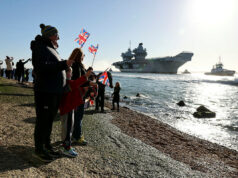


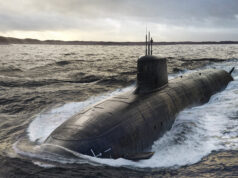
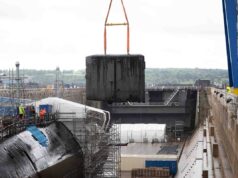
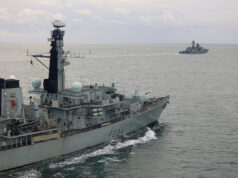
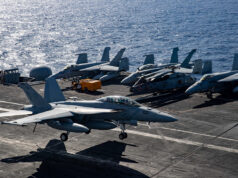
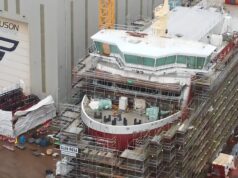
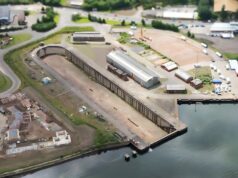
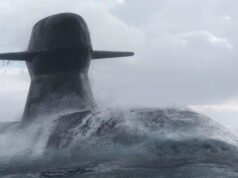

It may do just that, but it also leaves a serious capability gap in and the UK and its Northern waters. Our absolute lack of depth in all areas should be the most concerning current crisis we have and it needs to be shouted from the rooftops to get people to understand.
What’s your plan for AirPower in northern waters if we didn’t have these carriers? There is very good reason they spend much of their time exercising in Norway. What capability gaps do you think they are causing?
Jim what are you chunting about? I am talking escort platforms and crews. Where did I say not to have and utilise the carriers. Please make an effort at reading a post prior to replying. Once you re-read my post you will realise my concern was if and when the carriers and the battle group is away from UK waters.
Where did you mention the word escorts in your original post? You stated the carriers caused capability gaps, I’m stating not having the carriers is a capability gap.
The fact that the Carrier deploys to the Far East and requires a substantial chunk of our escorts to support it.
If we had enough Escorts, both GIUK and a CSG could be supported so deployments further away would not leave northern European waters with a shortage of RN assets.
We don’t.
It leaves a gap.
That, is what A means.
There are of course other NATO assets to cover the “gaps” but ideally that would not be necessary.
Jim, if you have a little trouble reading and interpreting posts then I’m afraid that’s no concern of mine. If the carriers are deployed for extended periods of time away in the Pacific etc then they will cause gaps in capability in our legacy area of operations, the North Atlantic. Please don’t get so defensive in your replies, thanks.
A sizeable chunk of our available F35 fleet (and supporting technicians etc) is on the other side of the globe as well as most of our available escort ships. Its not just naval assets we will be left without.
The planes can fly back in reasonably short order.
That will be three European carrier strike groups in the Pacific over a one year period! Given discussions of NATO first and a war in Europe, this at least sends signals to China that Europe hasn’t totally forgotten the Far East. I hope we announce soon when HMS Queen Elizabeth is next scheduled to go to Asia Pacific, or a longer “global” deployment. An announcement costs very little, but it still has a deterrent effect. Let’s hope that its less than 4 years and that if we can’t stretch to 24 F-35s this time around, we look to exceed it next time.
There are quite a few European carriers and hybrid carriers. Spain’s hybrid carrier is rapidly aging alongside its fleet of Harriers, but Turkey’s determination to build a full strike carrier to add to the hybrid Anadolu shows that European NATO is still producing and operating a globally deployable force. The US really should sort out the F-35 issue with Turkey. Surely the S400 issue can be quickly consigned to history.
Turkey is looking to dominate the Med, Black Sea and Arabian Sea. Its not interested in the Pacific. Turkish nationalists are more concerned with rebuilding the Ottoman Empire with a modern Turkish face.
We would look like real as**oles to the USA and Australia as well as Japan right now if France and Italy were sending carrier strike groups to the pacific and we were not because some guy called Dave thought it be a good idea to sell them to save a few quid.
France has a permanent presence in the Pacific though, so not surprising. they have huge overseas territory there
I support the deployment to the Pacific.
It does not need to be regular. It shows the UK is able to do so, sadly, needing allied escorts as well rather than an all RN.
But that itself is not a bad thing, it just shows what successive HMGs have done to the RN since the mid 90s.
Agreed mate, not only is it good training value but it gives the RN people an opportunity to get away and see the world, corny as it may seem. Cheers.
The UK isn’t able to do so with Fort George laid up we don’t have the ability to RAS a Carrier group.
I always thought that a European presence in the Pacific, was more of a political statement to ‘allies’, rather than a show of force to any potential adversary. In this sense, the ‘statement’ to the ‘larger’ ally is that we are here to show support, whilst acknowledging the presence and support that you give to us, in the North Atlantic.
Erhm…. Let’s not Forget the European territories in Pacific….
The QEs weren’t bought to operate principally in the North Atlantic but to be the centrepieces of an enhanced expeditionary capability in line with SDR 98. So sending them on a long range operation to the Asia/ Pacific area is consistent with that purpose. But given the failure of successive governments to fund the other elements of SDR98, the strike group looks very thin with too few escorts even when a large part of the available escort fleet is needed to provide the bare minimum defence. As a display of strength, it falls sadly short.
Given the limited capability of the F35 ( it seems that Tr3 upgrade has slipped again), I’m not sure the carrier’s absence from home waters weakens our home defence much. Typhoons deliver most of our air defence and have operated from bases in Estonia and Norway.
The big question is how much more should be invested in carrier capability at the expense of assets more specifically designed for self defence. At its simplest, more F35s or more Typhoons?
An exercise with european jets flying to Nouméa asap could also show commitment without involving carriers + would probably be Closer to reality if china triggers a crisis.
C’est une bonne nouvelle qu’il est un groupe aéronaval ou des groupes aéronavales, cela montre l’intention de l’Europe ( en grand ) de ne pas se coucher, sauf pour les allemands !
Cela est très bien aussi car cela permet des entrainements plus régulier avec nos allier de l’indopacifique !